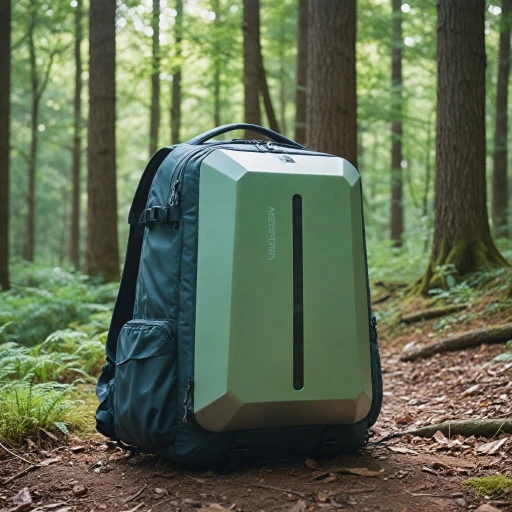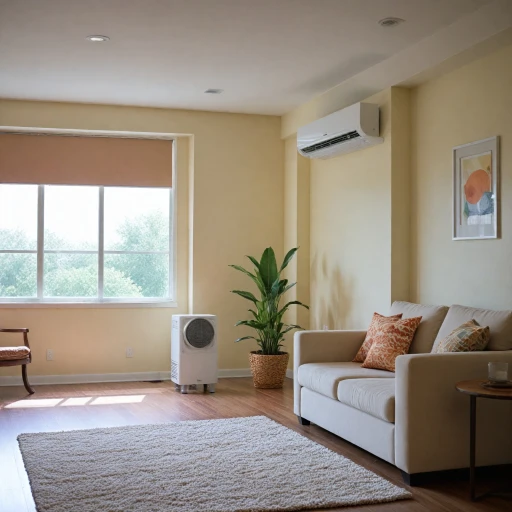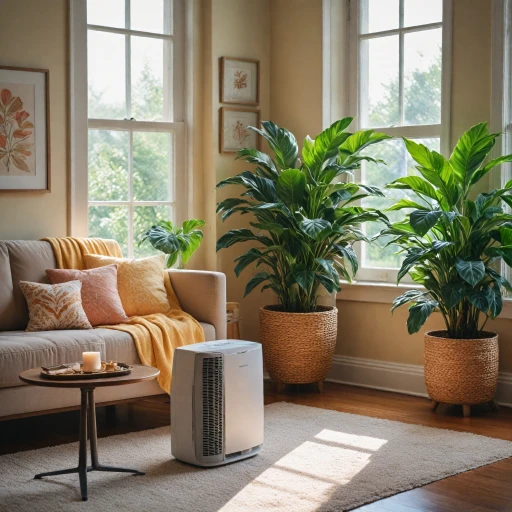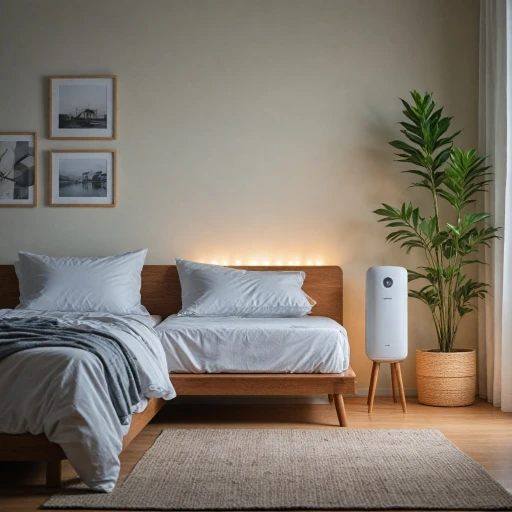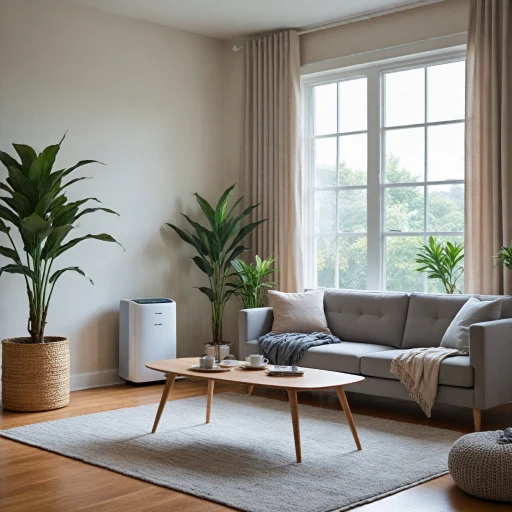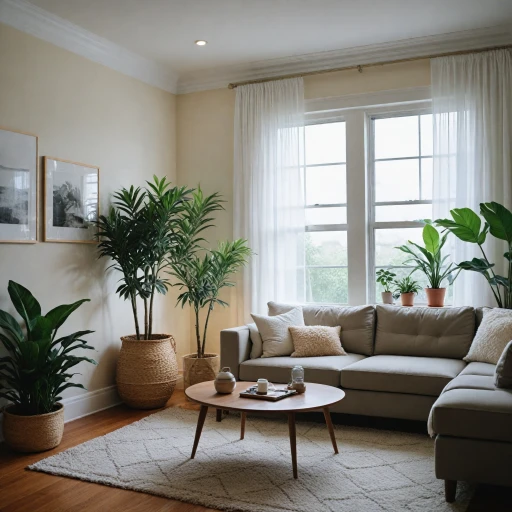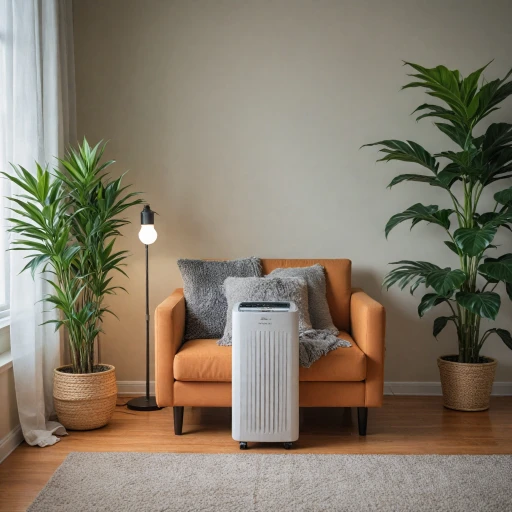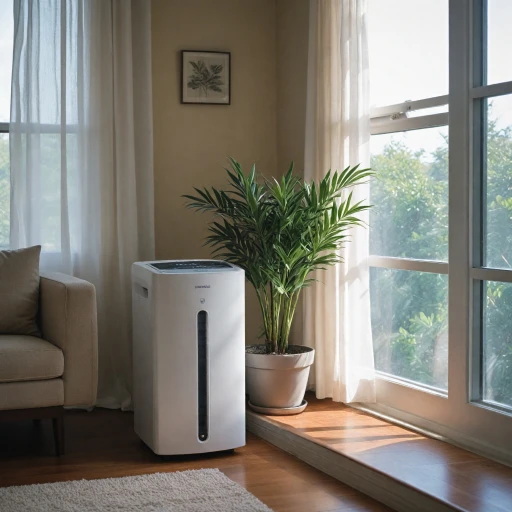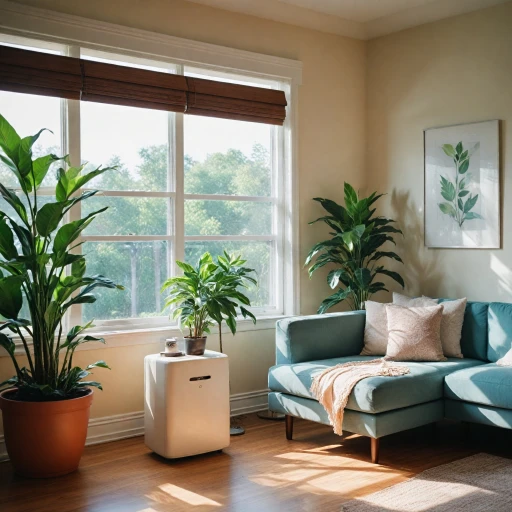
Understanding Ventless Portable AC Units
Grasping the Concept of Ventless Portable Air Conditioners
Ventless portable air conditioners have emerged as a popular option for those seeking efficient cooling solutions without the constraints of traditional units. Unlike standard portable air conditioners that require an exhaust hose to expel hot air through a window, ventless models operate differently. They typically use evaporative cooling, also known as a swamp cooler or air cooler, to cool the air. This method leverages the natural process of water evaporation to lower the temperature of the air—making it an ideal choice for dry environments. Functionality and Features The key feature distinguishing ventless portable air conditioners is their lack of an exhaust hose. This design means they don't require a window kit for setup, making them more flexible in terms of placement around a room. These units, known for their portability, can be easily moved from one space to another, ensuring you get cool air precisely where you need it. Typically, ventless portable units come with a variety of additional features such as:- Remote control for easy adjustments
- Multiple fan speed settings to customize the airflow
- Energy-saving modes to ensure efficient operation
Advantages of Using a Ventless Portable AC Unit
Key Advantages to Consider
Ventless portable AC units provide several remarkable advantages over traditional air conditioning options. One of the primary benefits is their ability to cool a room without the need for an external exhaust hose or a window installation. This makes them ideally suited for spaces where window access is limited or where building regulations prohibit the use of window units.Energy Efficiency and Cost-Effectiveness
Unlike conventional air conditioners, ventless air models, such as evaporative air coolers, utilize water to cool the air, which can significantly reduce the energy consumption of your unit. This reduction in energy use is not only environmentally friendly but also translates to potential cost savings on your energy bills. With rising energy costs, this becomes a significant advantage.Portable and Easy to Move
The compact form factor of ventless portable air conditioners also means that they are incredibly easy to transport around your home. Whether you need to cool a bedroom, living room, or even a home office, these units can be moved with minimal effort. The convenience this offers is particularly beneficial for individuals who rent their homes or frequently rearrange their living spaces.User-Friendly Features and Control
Modern ventless portable AC units typically come equipped with user-friendly controls, often including a remote control for adjusting settings from across the room. This means you can easily modulate the temperature, fan speed, or timer settings, enhancing your overall comfort and indoor climate.Low Maintenance Requirements
When it comes to maintenance, ventless portable units are favored for their simplicity. Since there are no exhaust hoses or extensive ductwork to worry about, maintaining your portable air conditioner is relatively straightforward. Regular checks on the water level and periodic cleaning are generally all that is required to keep the unit functioning optimally.For a more detailed look at other cooling options, including mobile evaporative coolers, take a quick view at understanding their benefits.
Ideal Situations for Ventless Portable AC Units
When Ventless Portable AC Units Shine
Ventless portable AC units, also known as swamp coolers or evaporative air conditioners, are perfect in specific situations, making them a go-to choice for countless users. Here's a closer view on when these units truly shine:- Dry Climates: These units excel in areas with low humidity levels, where the air is parched. By using the natural principle of evaporation, these units add moisture to the air while cooling the room, enhancing overall comfort.
- Energy Efficiency: If energy consumption is a concern, opt for these units. Ventless models generally consume less power than traditional units, helping you save on energy bills and reduce your carbon footprint.
- Cost-Effectiveness: Without the need for additional accessories like a dual hose or exhaust hose, ventless units can save you money upfront. Their straightforward operation minimizes maintenance and operating costs.
Portable and Convenient
The portability of these units offers unmatched convenience. Whether you're looking to cool a living room, bedroom, or a home office, a ventless portable unit can be moved effortlessly from one room to another, thanks to its lightweight design and castor wheels. Moreover, their compact size makes them ideal for smaller spaces or areas where you might find it hard to install more complex systems like mini split or window air conditioners. Unlike models with cumbersome hoses or intricate setups, ventless models are easily navigated and installed wherever cooling is required.Spaces with Limited Venting Options
Unfortunately, not every location can accommodate the venting requirements of traditional portable ACs. In instances where a window or an external wall for vent installation isn't available, ventless air models become a practical alternative. Their need for venting is minimal or non-existent, providing cooling options in challenging spaces. When selecting the right model, it's important to consider the BTU capacity. While a higher BTU rating in btu portable units suggests greater cooling capacity, determining the appropriate BTU for your space is crucial for optimal performance. For more detailed insights, visit quiet portable air conditioner.Considerations When Choosing a Ventless Portable AC Unit
Key Factors to Consider When Selecting a Ventless Portable AC
Choosing the right ventless portable air conditioner involves weighing several important factors to ensure you get the best cooling solution for your needs. Here are some key considerations:
- Cooling Capacity: The cooling power of an air conditioner is measured in BTUs (British Thermal Units). For ventless portable ACs, understanding the BTU rating is crucial. A higher BTU rating means more cooling power, which is essential for larger rooms. Consider the size of the room you intend to cool and match it with an appropriate BTU portable unit.
- Energy Efficiency: Energy consumption is a significant factor, especially if you plan to use the unit frequently. Look for models with energy-saving features or those with a high Energy Efficiency Ratio (EER) to save on electricity bills.
- Portability: One of the main advantages of portable air conditioners is their mobility. Ensure the unit is easy to move around, with features like wheels or handles. This is particularly important if you plan to use the unit in different rooms.
- Noise Level: Some air conditioners can be quite noisy, which might be disruptive, especially in a bedroom or office setting. Check the decibel rating of the unit to ensure it operates quietly.
- Additional Features: Consider models that offer additional features such as a remote control for convenience, multiple fan speeds, or a programmable timer. These can enhance the overall user experience.
- Maintenance: Ventless portable ACs require regular maintenance to function effectively. Look for units with easy-to-clean filters and accessible parts to simplify upkeep.
- Cost: Finally, consider your budget. While ventless units can be more affordable than traditional air conditioning systems, prices can vary widely based on features and brand. Balance your needs with your budget to find the best value.
By considering these factors, you can make an informed decision and select a ventless portable air conditioner that meets your cooling needs effectively.
Comparing Ventless Portable AC Units to Other Cooling Options
Evaluating the Cooling Capabilities of Different Systems
When considering your cooling options, it's essential to compare ventless portable air conditioners with other systems available in the market. Here's a quick view of how these units stack up against other popular choices:
- Traditional Portable Air Conditioners: These units often come with either a single or dual hose system. Unlike ventless models, they use an exhaust hose to vent hot air outside. While effective, they might not deliver the ease of setup and mobility offered by ventless units.
- Window Air Conditioners: While efficient, these appliances require permanent installation, which may not suit renters. Ventless portable units, on the other hand, need no window access, thus providing greater flexibility.
- Split Air Conditioners: Known for their energy efficiency and quiet operation, split systems are unsuitable for temporary setups or small spaces where installing an evaporative air cooler is more practical. They also come at a higher price point.
- Swamp Coolers: Also referred to as evaporative air coolers, these conditioners work best in dry climates. They differ from ventless portable units, which thrive in more diverse conditions without needing a ventilation system.
- Mini Split Systems: Offering a more permanent solution, these units provide exceptional cooling but lack the portability and flexibility of ventless models.
Understanding these comparisons can help you determine which posits the best advantages for your specific needs, particularly if mobility and energy efficiency are priorities. Despite having lower BTU ratings compared to some traditional air conditioners, modern ventless portable models utilize advanced technology to maximize cooling power and efficiency, making them a compelling choice for many.
Tips for Maximizing the Efficiency of Your Ventless Portable AC Unit
Enhancing Performance and Longevity
To get the most out of your ventless portable air conditioner, maximizing its efficiency is essential. Not only does this lead to better cooling performance, but it can also extend the lifespan of your unit and save on energy costs. Here are some expert tips to help you optimize your experience:- Proper Placement: Ensure that the unit is placed in a central location within the room it is cooling. Avoid obstructing the air intake and outtake, allowing unobstructed air circulation.
- Btu Rating: Choose a unit with an appropriate BTU (British Thermal Unit) rating based on the room size. A correct BTU rating ensures optimal cooling and efficiency, with larger rooms requiring higher BTU levels.
- Seal the Room: Close all windows and doors to prevent hot air from entering the cooled space. This minimizes the workload on your portable air conditioner, allowing it to cool more effectively without wasting energy.
- Regular Maintenance: Clean the air filters regularly to keep the unit operating at its peak. Dust and debris can hinder airflow, decreasing efficiency. Follow the manufacturer's maintenance guidelines for your specific model.
- Optimize Venting: While ventless units do not require traditional exhaust hoses, using a fan to circulate air may assist in more uniform cooling, especially in larger locations.
- Use Shades or Blinds: During peak sun hours, using shades or blinds can help reduce additional heat load, especially if your room receives direct sunlight. It will help the air conditioner maintain a cooler environment more efficiently.
- Remote Control Usage: Utilize the remote control feature for easy adjustments in temperature and settings, maintaining convenience while ensuring you achieve the desired comfort level.

